The all-new C8 boasts a radical new design and vastly improved interior materials
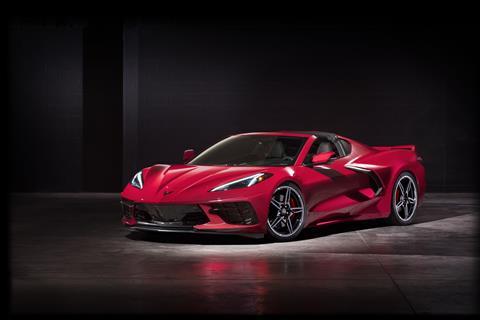
Zora Arkus-Duntov, known by many as the father of the Corvette, knew as early as the 1950s that the most successful formula for a racing car was to put the engine behind the driver. Zora tried for years to convince General Motors to build a mid-engine Corvette, developing and showing a series of prototypes throughout the 1960s and ‘70s. But GM resisted, in large part because the expense was just too great for a sports car that was known as much for its affordability as it was for its place in pop culture.
“That formula would have not been passable in earlier years, and we finally cracked the code to get that price point,” said Mark Reuss, president of General Motors. Fast forward to 2019, and in a cavernous blimp hangar in Orange County, CA, the first mid-engine production Corvette was just revealed to a throng of thousands and live-streamed to millions worldwide.
“This has always been Corvette’s destiny and is the supercar that we’ve all wanted to see for so long,” a beaming Reuss says. “To reach the performance expected by our customers we had to go to mid-engine. Traditionalists and potential new customers will embrace the change and layout, and will think it’s the best Corvette they’ve ever driven.”
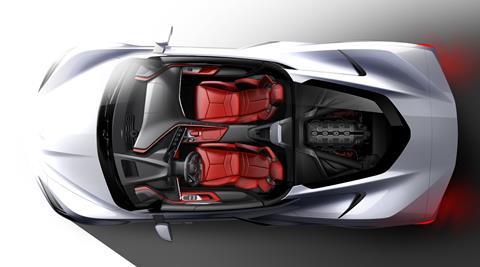
For the design team, moving from a front-engine layout to the mid-engine packaging was no mean feat. “This is not merely a new chapter in Corvette history, it’s a whole new book,” says Phil Zak, global executive design director for Chevrolet. “Every time we build a new Corvette, we must build on its history. The challenges were unique in that everything had to be changed.” The mid-engine layout allowed everything to be pushed further forward, and Zak said surfaces were made as taut as possible, while keeping the look clean (the door releases, for example, are hidden under the side intakes).
At the same time, Zak says his team maintained some of the classic Corvette design cues such as the bold front face with LED lights, strong fender peaks over the front wheel and rear three-quarter, and the horizontal crease down the bodyside, which he says is the main element that gives the Corvette its unique appearance. They also completely redesigned cooling and airflow, looking at aerodynamics and lift while maintaining the design integrity.
Zak’s team found inspiration in high-end motorcycles and racing cars, and attempted to recreate the proportions of a fighter jet. “The scoop in the side, referencing the jet fighters, that was really a ‘wow’ moment when we saw it in the studio,” Zak recalls. In the rear, the former central quad exhaust, which some have likened to the horn section of a mariachi band, has been pushed far out to the corners in pairs. A Z51 performance package adds an aggressive front splitter and rear spoiler.
Since the engine compartment is visible through the back window, designers spent a lot of time making it look “like a jewel in a showcase,” down to every wire and fastener. That engine, by the way, is a naturally-aspirated 6.2-litre V8, good for 495hp and 470lb/ft (637Nm) of torque. Paired with the eight-speed, dual-clutch transmission, Reuss promises the new Corvette will do 0-60mph in “less than three seconds.”
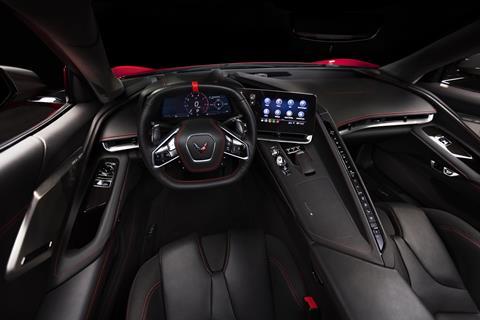
Perhaps the biggest news for the C8 Corvette is the interior design. Because the Corvette always had to meet a price point, the interiors of past generations suffered, with a plethora of plastics and materials from the shared GM parts bin – and of course, there was always that trademark Corvette smell, most likely from some kind of adhesive.
But those days are gone. “We had to deliver an inspiring interior to match [the exterior],” Zak told us. “With new technology, we saved money on some of the underbody structure and other elements, and we spent that money on the interior.”
Almost every surface in the C8 is wrapped in leather or suede. Trim is made from genuine carbonfibre. Stitching in the leather upholstery is thicker and more pronounced than before, and even the headliner is stitched. There’s also more opportunity for customisation, with six interior colour themes and three seat choices. “The cockpit is wrapped around you and is all about catering to the driving experience,” Zak says. The less-is-more philosophy includes new, thin air vents that keep the IP low. The mid-engine layout meant the entire package was moved forward 16 inches and allowed for improved interior accommodations. As a result, the seats in the C8 gain an additional inch of travel.
Visibility was improved with a lower cowl and a new square steering wheel that leaves an unobstructed view of the instrument cluster. “I’m really glad we got the wheel,” says Ryan Vaughan, former director of interior design and now executive design director at PATAC in Shanghai. “I think it’s a big statement. We had some early designs and Mark Reuss said, ‘you have to push more.’ This is more of a pure, true flat, moreso than before; we found that if you take a round wheel and just flatten out the tops and bottoms it doesn’t work that well. It’s okay until you’re turning the wheel and maneuvering in parking lot situations… and so we solved that by bringing the top down further.”
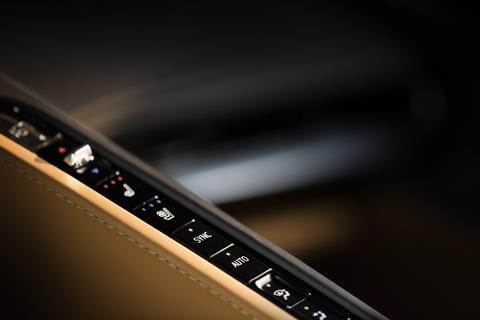
And that blade-like IP that runs down the center of the cockpit? “It was super controversial,” Vaughan tells us. “We wanted to keep the IP low, and we also wanted to reinterpret what the IP meant in a modern way and make it very dramatic. You can see so much of the interior from the outside now, so you’re seeing all these dramatic design elements before you even open the door.”
The interior design team looked at controlling vehicle functions such as HVAC solely through the screen, but decided to keep hard buttons. “For a sports car, having those tactile elements for frequently used functions made a lot of sense,” he says. “We thought if we could fit the switches in the cockpit spine, then it just became [a case of] deciding what buttons to use.” Only one round knob – a volume control – can be found inside the C8.
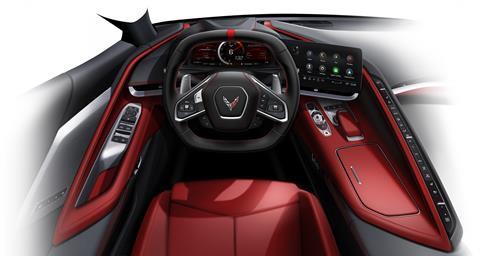
Vaughan, who also worked on the C7, said his team learned how to do a colour break-up on the C8 without getting glare in the windscreen. Using a red-and-black interior as an example, he points out how the red dominates the lower portion of the cabin, but “as you get closer to the windshield, they invert, there’s more black on the top. It not only creates less glare, it also gives it this floating blade motif.”
The 2020 Corvette C8 Stingray will be built at GM’s assembly plant in Bowling Green, Kentucky and will be available beginning in late 2019 at a starting price of less than $60,000 – and good news for customers in the UK: the C8 will also be available in right-hand-drive.
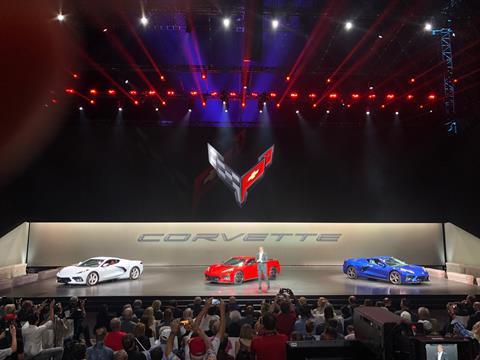
CDN Los Angeles Forum 2019
Chevrolet will present an official design walkaround of the new Corvette at the CDN Los Angeles Forum 2019 on 20 November. For more information about this exclusive design event visit: http://www.cardesignforum.com/la/































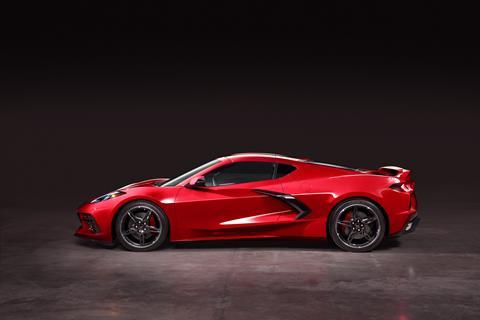


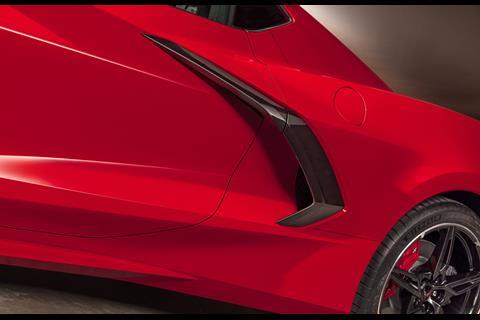
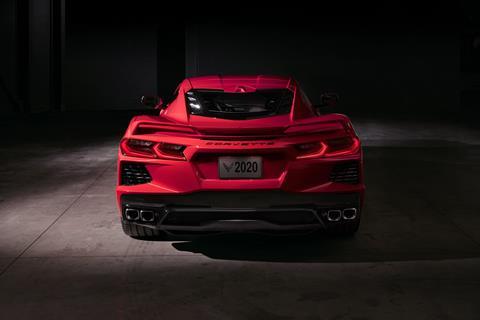
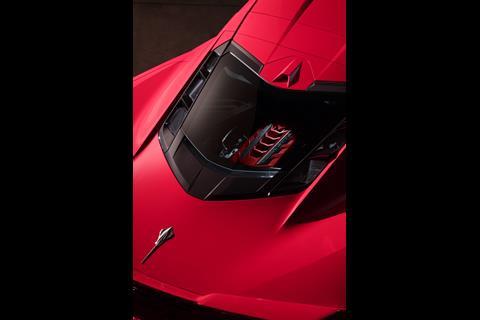
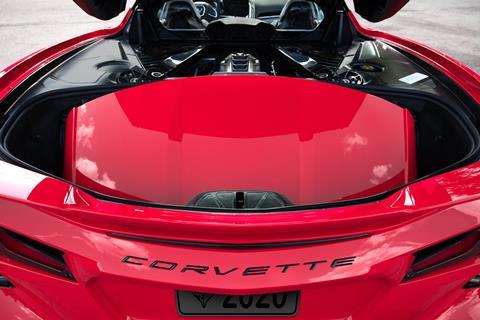
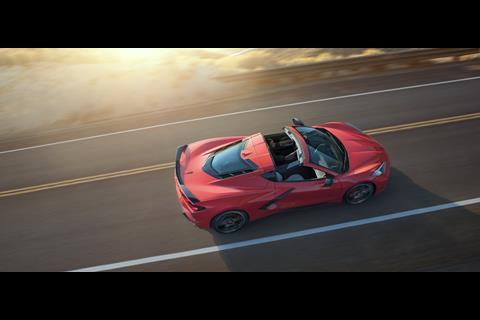
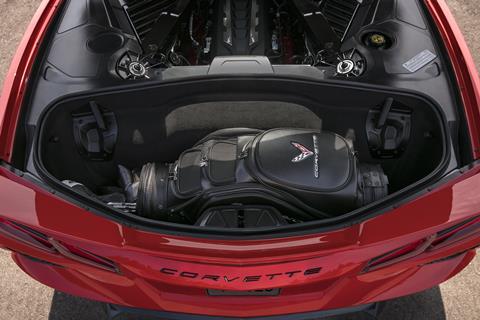
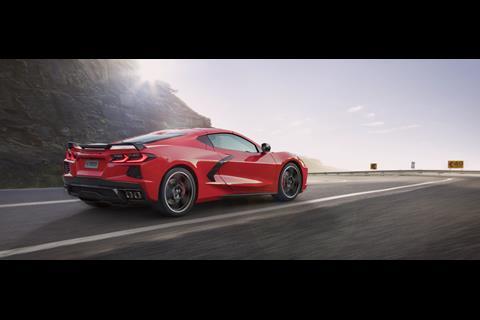

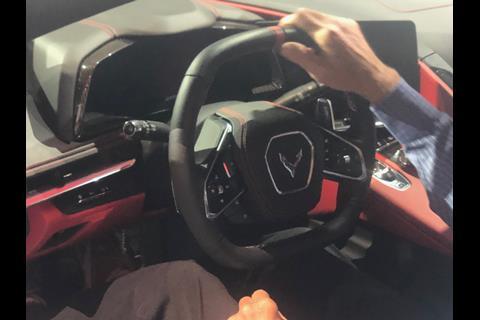
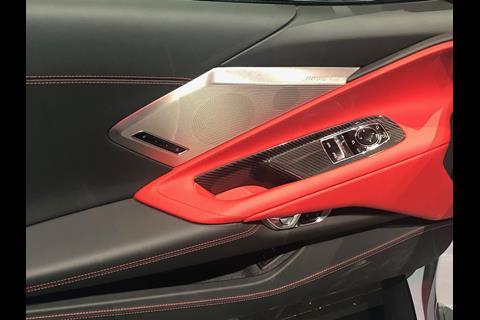
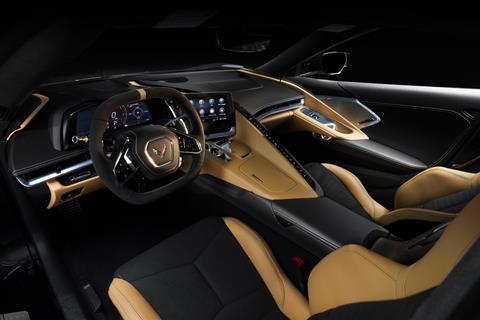
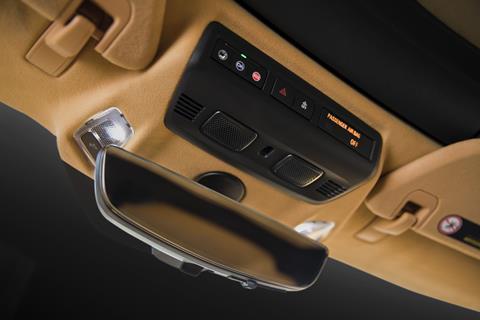
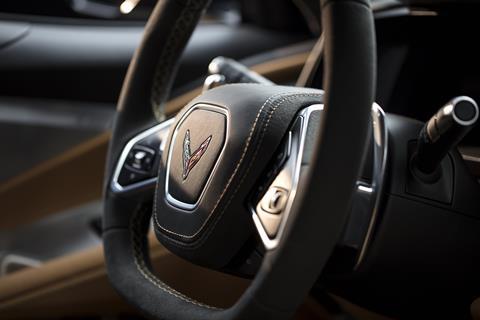

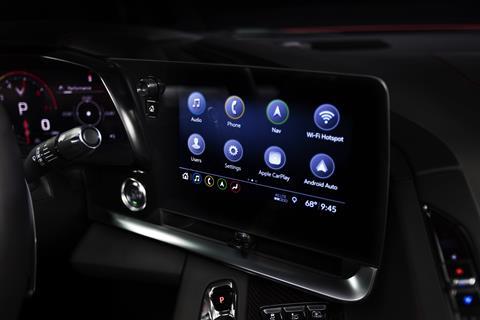

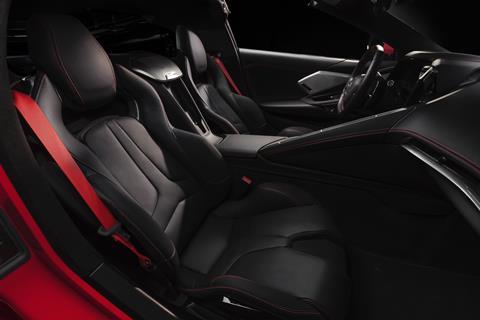




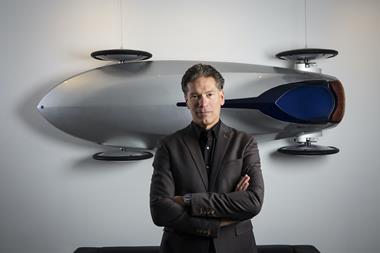
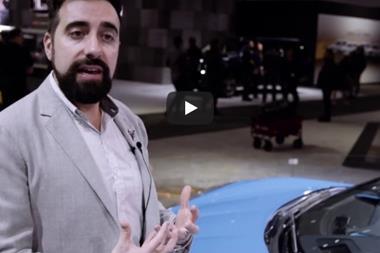
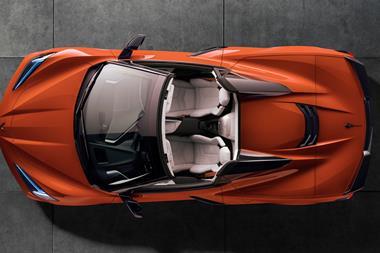

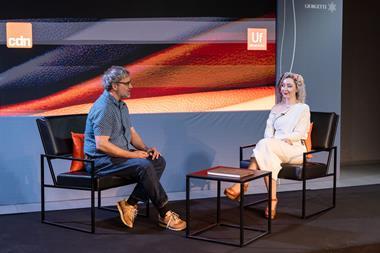



No comments yet